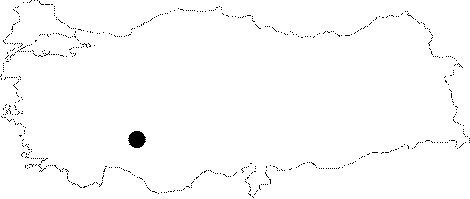| Location: It is located on the rocky area in the east and the north of G÷kyurt Village within the borders of Merkez Meram District of Konya Province. |
| Geography and Environment: |
| Research and Excavation: The cleaning and the restoration studies were carried out under the leadership of Archaeologist N. Ízkan by Konya Museum in 1998-1999 and 2001[Ízkan 2001:168; Ízkan 2003:223-224, 227]. |
| Description: Architectural Features: The structure carved into rock is in equal-armed cross plan. The naos is entered through the door in the west. There are sitting benches adjoining to the walls of the north, the south and the west cross-arms. The cross-arms are covered by barrel vault, while the central section where the cross-arms meet is roofed by prismatic cone. There is a rectangular planned burial chamber adjacent to the northwest of the church and this chamber contains three adult burials. This room is accessible through the narrow opening on the north cross-arm. The apse is separated from the naos by raising the floor and templon screens. Two windows brighten up the room. There is a pair of niches, which are higher than the floor, on the east walls of the north and the south cross-arms. These niches containing altar-like benches might have functioned as lateral apses. Except the north fašade, all fašades are decorated. A fillet encircles the main walls of the church. Decorative Features: Traces found on the roof indicate that the structure was once decorated with frescoes. Under the fresco, there is a simple decoration consisting of cross and geometric motifs in red ochre [Ízkan 2001:168]. |
| Finds: In the burial chamber, the first burial yielded a bronze ring and a bronze circle belonging to the Byzantine Period. In the second one, on the other hand, a bronze cross and a Seljuk coin were found [Ízkan 2001:172]. |
| Interpretation: |
| Destruction: |


